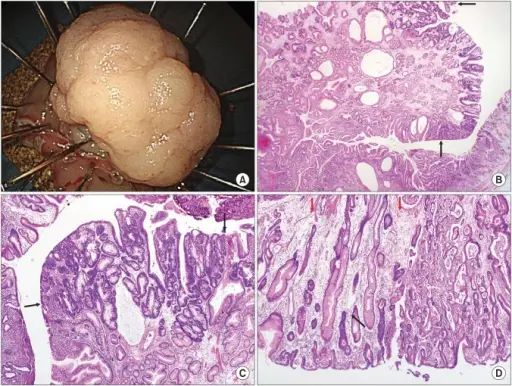Hyperplastic polyps is a growth of extra cells that projects out from tissues inside your body. They occur in areas where your body has repaired damaged tissue, especially along your digestive tract. Hyperplastic colorectal polyps happen in your colon, the lining of your large intestine.
What is the Pathology of Hyperplastic Polyps?
The pathology of hyperplastic polyps is:
-Etiology: The cause of hyperplastic polyps is chronic stomach inflammation, and mutations.
-Genes involved: MLH-1, MGMT.
-Pathogenesis: The sequence of events that lead to hyperplastic polypsis unclear. It had no malignant potential. However, it is recommended to biopsy the lesion and surrounding mucosa shows mixture of normal, ulcerated, and regenerating mucosa which is surrounded by areas of mucosal loss.
-Histology: The histology associated with hyperplastic polyps shows serrated architecture with a sawtooth appearance, with serrations generally limited to the upper half of the crypts mild nuclear enlargement, stratification and hyperchromasia, limited to the crypt bases.
How does Hyperplastic Polyps Present?
Patients with hyperplastic polyps typically all genders over the age of 50 years. The symptoms, features, and clinical findings associated with hyperplastic polyps include: pain or tenderness, nausea, blood in your stool, anemia.
How is Hyperplastic Polyps Diagnosed?
Hyperplastic polyps is diagnosed endoscopy and biopsy.
How is Hyperplastic Polyps Treated?
Hyperplastic polyps is treated by endoscopy and removal.
What is the Prognosis of Hyperplastic Polyps?
The prognosis of hyperplastic polyps is fair. Polyps must be removed before they become cancerous lowers your risk of developing colorectal or stomach cancer by almost 80 percent. Most are harmless and won’t ever become cancerous.



